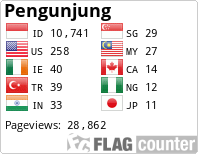Students’ Error In Pronouncing English Vowel
DOI:
https://doi.org/10.55606/jupensi.v3i2.2020Keywords:
Error, Pronouciation, languange, english, vowelAbstract
Language and how to pronounce it are inseparable in the context of learning a new language. There are undoubtedly faults in the process of pronouncing a word in any language, particularly non-native languages. While many people confuse error with a mistake, error often refers to the difference between the actual or expected value and the resultant or observed value. Errors may be measured, examined, and used to determine the degree of correctness or inaccuracy in a variety of domains. Mistakes, on the other hand, are more typically seen in general or daily conditions. Mistakes are often defined as improper or wrong behaviors or decisions, whether in decision-making, physical activities, or communication. Incomprehension, carelessness, or actions that are contrary to what should have been done are all examples of mistakes. This study, which focused on the pronunciation errors produced by English language education majors at the college of education, employed a qualitative descriptive approach to gather information from 20 students and ask them to read a short tale. This study identified three types of error: Substitution, additional, and omission. Following additional with 3.78% and omission with 0.34% as the least frequent error types made by students, it was discovered after gathering all the data that substitution accounted for 100% of all errors.
References
QIU, Wen. Aristotle’s definition of language. International Journal of English Literature and Culture, 2014, 2.8: 194-202.
Repka, Richard. “TOWARDS A DEFINITION OF LANGUAGE.” 2021.
Sinurat, B. and Herman., "The Typology of the First Year Students’ Pronunciations At FKIP Universitas HKBP Nommensen Pematangsiantar On English Voiceless Plosive Consonants", Journal of English Language and Culture, Vol. 10 (No. 1): 1 - 9. 2019.
HUTABARAT, Novra Melisa P. ERROR ANALYSIS OF STUDENTS’PRONUNCIATION IN PRONOUNCING ENGLISH VOWEL AT THE FIRST SEMESTER IN ENGLISH DEPARTMENT OF UNIVERSITAS HKBP NOMMENSEN PEMATANGSIANTAR. Jurnal Scientia, 2023, 12.01: 335-339.
HILLENBRAND, James, et al. Acoustic characteristics of American English vowels. The Journal of the Acoustical society of America, 1995, 97.5: 3099-3111.
Richards, J. C., & Schmidt, R. Longman Dictionary of Language Teaching & Applied Linguistics. Proceedings of the 21st Asian Pacific Weed Science Society (APWSS) Conference, 2-6 October 2007, Colombo, Sri Lanka. 2010.
Fasold R. W., and In Connor- Linton. An introduction to language and linguistics.Cambridge, UK: Cambridge University Press. 2006.
Crystal, David. (1987). The Cambridge Encyclopedia of Language. Cambridge, England: Cambridge University
Brown, H. Douglass. (1980). Principle of Language Learning and Teaching. New Jersey: Practice Hall.
Khansir, A. A. (2012). Error analysis and second language acquisition. Theory and Practice in Language Studies, 2(5), 1027–1032.
Indrawati, I. (2017). My Insights on Learning Modern English Grammar. Tarbawy: Jurnal Pendidikan Islam, 4(1), 23–37.
Gass, S. M., Behney, J., & Plonsky, L. (2020). Second language acquisition: An introductory course. Routledge
Ellis, R., & Barkhuizen, G. P. (2005). Analysing learner language. Oxford University Press Oxford
James, C. (2013). Errors in language learning and use: Exploring error analysis. Routledge.
Qodir, A. (2006). An Error Analysis on changing active voice into passive voice. Himmah, 7(18), 1–17.
Pallawa, B. A., & Alam, A. F. A. (2013). A comparative analysis between English and Indonesian phonological systems. OJS version of International Journal of English Language Education, 1(3)
Downloads
Published
How to Cite
Issue
Section
License
Copyright (c) 2023 Jurnal Pendidikan dan Sastra Inggris

This work is licensed under a Creative Commons Attribution-ShareAlike 4.0 International License.

















